Research on Tree Ring Micro-Destructive Detection Technology Based on Digital Micro-Drilling Resistance Method
Abstract
:1. Introduction
2. Background
2.1. Dendrochronological Basis for Micro-Drilling Resistance Technology
2.2. Classification of Micro-Drilling Resistance Method
2.2.1. Mechanical Micro-Drilling Resistance Method
2.2.2. Analog Micro-Drilling Resistance Method
2.2.3. Digital Micro-Drilling Resistance Method
3. Materials and Methods
3.1. Principle of Digital Micro-Drilling Resistance Method
3.2. Hardware Implementation of Digital Micro-Drilling Resistance Method
3.2.1. SoC Module
3.2.2. H-Bridge Motor Driver Module
3.2.3. Digital Signal Sampling Module
3.3. Experimental Equipment
3.3.1. Mechanical Structure
3.3.2. Hardware Circuit
3.4. Experimental Sample
4. Results
4.1. Original Detection Results
4.2. Result of Preprocessing and Correlation Analysis
4.3. Power Spectrum Analysis and SNR
5. Discussion
6. Conclusions
Author Contributions
Funding
Institutional Review Board Statement
Informed Consent Statement
Data Availability Statement
Conflicts of Interest
References
- Carlón-Allende, T.; Villanueva-Díaz, J.; Mendoza, M.E.; Pérez-Salicrup, D.R. Climatic Signal in Earlywood and Latewood in Conifer Forests in the Monarch Butterfly Biosphere Reserve, Mexico. Tree-Ring Res. 2018, 74, 63–75. [Google Scholar] [CrossRef]
- Zhang, Y.; Li, J.; Zheng, Z.; Zeng, S. A 479-Year Early Summer Temperature Reconstruction Based on Tree-Ring in the Southeastern Tibetan Plateau, China. Atmosphere 2021, 12, 1251. [Google Scholar] [CrossRef]
- Acosta-Hernández, A.C.; Pompa-García, M.; Camarero, J.J. An Updated Review of Dendrochronological Investigations in Mexico, a Megadiverse Country with a High Potential for Tree-Ring Sciences. Forests 2017, 8, 160. [Google Scholar] [CrossRef] [Green Version]
- Moon, N.H.; Moon, G.H.; Chun, J.H.; Shin, M.Y. Dendroclimatological analysis and tree-ring growth prediction of Quercus mongolica. For. Sci. Technol. 2020, 16, 32–40. [Google Scholar] [CrossRef] [Green Version]
- Li, G.; Harrison, S.P.; Prentice, I.C. Quantifying climatic influences on tree-ring width. Biogeosci. Discuss. 2019. preprint. [Google Scholar] [CrossRef] [Green Version]
- Gurskaya, M.A. Effect of Summer Monthly Temperatures on Light Tree Ring Formation in Three Larch Species (Larix) in the Northern Forest–Tundra of Siberia. Russ. J. Ecol. 2019, 50, 343–351. [Google Scholar] [CrossRef]
- Sánchez-Calderón, O.D.; Carlón-Allende, T.; Mendoza, M.E.; Villanueva-Díaz, J. Dendroclimatology in Latin America: A Review of the State of the Art. Atmosphere 2022, 13, 748. [Google Scholar] [CrossRef]
- Zou, W.; Jing, W.; Chen, G.; Lu, Y.; Song, H. A Survey of Big Data Analytics for Smart Forestry. IEEE Access 2019, 7, 46621–46636. [Google Scholar] [CrossRef]
- Torresan, C.; Garzón, M.B.; O’Grady, M.; Robson, T.M.; Picchi, G.; Panzacchi, P.; Tomelleri, E.; Smith, M.; Marshall, J.; Wingate, L.; et al. A new generation of sensors and monitoring tools to support climate-smart forestry practices. Can. J. For. Res. 2021, 51, 1751–1765. [Google Scholar] [CrossRef]
- Gallois, E. Cassiope Tetragona as a Dendroecological Proxy: A Retrospective Analysis of Experimental Warming in the Arctic Tundra; University of British Columbia: Vancouver, BC, Canada, 2019. [Google Scholar]
- García-Hidalgo, M.; García-Pedrero, Á.M.; Caetano-Sánchez, C.; Gómez-España, M.; Lillo-Saavedra, M.; Olano, J.M. ρ-MtreeRing: A Graphical User Interface for X-ray Microdensity Analysis. Forests 2021, 12, 1405. [Google Scholar] [CrossRef]
- García-Hidalgo, M.; García-Pedrero, Á.; Colón, D.; Sangüesa-Barreda, G.; García-Cervigón, A.I.; López-Molina, J.; Hernández-Alonso, H.; Rozas, V.; Olano, J.M.; Víctor, A.-G. CaptuRING: A do-it-yourself tool for wood sample digitization. Methods Ecol. Evol. 2022, 13, 1185–1191. [Google Scholar] [CrossRef]
- Alekseev, A.S.; Sharma, S.K. Long-Term Growth Trends Analysis of Norway Spruce Stands in Relation to Possible Climate Change: Case Study of Leningrad Region, 2020, No3 (375). Available online: https://cyberleninka.ru/article/n/long-term-growth-trends-analysis-of-norway-spruce-stands-in-relation-to-possible-climate-change-case-study-of-leningrad-region (accessed on 16 June 2022).
- Kozakiewicz, P.; Jankowska, A.; Mamiński, M.; Marciszewska, K.; Ciurzycki, W.; Tulik, M. The Wood of Scots Pine (Pinus sylvestris L.) from Post-Agricultural Lands Has Suitable Properties for the Timber Industry. Forests 2020, 11, 1033. [Google Scholar] [CrossRef]
- Oh, J.; Seo, J.-W.; Kim, B.-R. Verifying the Possibility of Investigating Tree Ages Using Resistograph. J. Korean Wood Sci. Technol. 2019, 47, 90–100. [Google Scholar] [CrossRef]
- Karki, J.; Gautam, D.; Thapa, S.; Thapa, A.; Aryal, K.; Sidgel, R. A Century Long Tree-Climate Relations in Manaslu Conservation Area, Central Nepalese Himalaya. N. Am. Acad. Res. 2019, 2, 49–62. [Google Scholar]
- Abiyu, A.; Mokria, M.; Gebrekirstos, A.; Brauning, A. Tree-ring record in Ethiopian church forests reveals successive generation differences in growth rates and disturbance events. For. Ecol. Manag. 2018, 409, 835–844. [Google Scholar] [CrossRef]
- Riechelmann, D.F.C.; Fohlmeister, J.; Kluge, T.; Peter, K.; Richter, D.K.; Deininger, M.; Freidrich, R.; Frank, N.; Scholz, D. Evaluating the potential of tree-ring methodology for cross-dating of three annually laminated stalagmites from Zoolithencave (SE Germany). Quat. Geochronol. 2019, 52, 37–50. [Google Scholar] [CrossRef]
- Kagawa, A.; Fujiwara, T. Smart increment borer: A portable device for automated sampling of tree-ring cores. J. Wood Sci. 2018, 64, 52–58. [Google Scholar] [CrossRef]
- Marin, G.; Abrudan, I.V.; Strimbu, B. Increment Cores of the National Forest Inventory from Romania. Math. Comput. For. Nat. Resour. Sci. 2019, 11, 294–302. [Google Scholar]
- Gärtner, H.; Cherubini, P.; Fonti, P.; von Arx, G.; Schneider, L.; Nievergelt, D.; Verstege, A.; Bast, A.; Schweingruber, F.H.; Buntgen, U. A technical perspective in modern tree-ring research-how to overcome dendroecological and wood anatomical challenges. J. Vis. Exp. 2015, 97, e52337. [Google Scholar] [CrossRef] [Green Version]
- Patrut, A.; Woodborne, S.; Patrut, R.T.; Rakosy, L.; Lowy, D.A.; Hall, G.; von Reden, K.F. The demise of the largest and oldest African baobabs. Nat. Plants 2018, 4, 423–426. [Google Scholar] [CrossRef]
- Soge, A.O.; Popoola, O.I.; Adetoyinbo, A.A. Detection of wood decay and cavities in living trees: A review. Can. J. For. Res. 2021, 51, 937–947. [Google Scholar] [CrossRef]
- Fabiánová, A.; Šilhán, K. The Growth Responses of Picea abies (L.) Karst. to Increment Borer Wounding. Tree-Ring Res. 2021, 77, 74–85. [Google Scholar] [CrossRef]
- Allison, R.B.; Wang, X.; Senalik, C.A. Methods for Nondestructive Testing of Urban Trees. Forests 2020, 11, 1341. [Google Scholar] [CrossRef]
- Houjiang, Z. Inspection of growth quality for urban trees. Sci. Silvae Sin. 2005, 41, 198. [Google Scholar]
- Tomazello, M.; Brazolin, S.; Chagas, M.P.; Oliveira, J.T.S.; Ballarin, A.W.; Benjamin, C.A. Application of X-ray Technique in Nondestructive Evaluation of Eucalypt Wood. Maderas Cienc. Tecnol. 2008, 10, 139–149. [Google Scholar] [CrossRef]
- Jacquin, P.; Longuetaud, F.; Leban, J.M.; Mothe, F. X-ray Microdensitometry of Wood: A Review of Existing Principles and Devices. Dendrochronologia 2017, 42, 42–50. [Google Scholar] [CrossRef]
- Schönfelder, O.; Zeidler, A.; Borůvka, V.; Bílek, L.; Vítámvás, J. Effect of Shelterwood and Clear-Cutting Regeneration Method on Wood Density of Scots Pine. Forests 2020, 11, 868. [Google Scholar] [CrossRef]
- Rinn, F.; Schweingruber, F.H.; Schär, E. Resistograph and X-ray Density Charts of Wood. Comparative Evaluation of Drill Resistance Profiles and X-ray Density Charts of Different Wood Species. Holzforschung 1996, 50, 303–311. [Google Scholar] [CrossRef]
- İÇEL, BİLGİN and GÜLER, GÜRCAN Nondestructive determination of spruce lumber wood density using drilling resistance (Resistograph) method. Turk. J. Agric. For. 2016, 40, 10. [CrossRef]
- Rinn, F. Typical trends in resistance drilling profiles of trees. Arborist News 2014, 47, 42–47. [Google Scholar]
- Sharapov, E.; Brischke, C.; Militz, H.; Smirnova, E. Prediction of modulus of elasticity in static bending and density of wood at different moisture contents and feed rates by drilling resistance measurements. Eur. J. Wood Prod. 2019, 77, 833–842. [Google Scholar] [CrossRef]
- Walker, T.D.; Isik, F.; McKeand, S.E. Genetic Variation in Acoustic Time of Flight and Drill Resistance of Juvenile Wood in a Large Loblolly Pine Breeding Population. For. Sci. 2019, 65, 469–482. [Google Scholar] [CrossRef]
- Tomczak, K.; Tomczak, A.; Jelonek, T. Measuring Radial Variation in Basic Density of Pendulate Oak: Comparing Increment Core Samples with the IML Power Drill. Forests 2022, 13, 589. [Google Scholar] [CrossRef]
- Downes, G.M.; Harrington, J.J.; Drew, D.M.; Lausberg, M.; Muyambo, P.; Watt, D.; Lee, D.J. A Comparison of Radial Wood Property Variation on Pinus radiata between an IML PD-400 ‘Resi’ Instrument and Increment Cores Analysed by SilviScan. Forests 2022, 13, 751. [Google Scholar] [CrossRef]
- Rinn, F. Basics of typical resistance-drilling profiles. West. Arborist 2012, 17, 30–36. [Google Scholar]
- Cao, Y.; Wang, D.; Wang, Z.; Tian, L.; Zheng, C.; Tian, Y.; Liu, Y. Research on Tree Pith Location in Radial Direction Based on Terrestrial Laser Scanning. Forests 2021, 12, 671. [Google Scholar] [CrossRef]
- Hu, X.; Zheng, Y.; Liang, H.; Zhao, Y. Design and Test of a Microdestructive Tree-Ring Measurement System. Sensors 2020, 20, 3253. [Google Scholar] [CrossRef]
- Chen, X. Design of Needle Measurement System for Tree Annual Ring. Master’s Thesis, Beijing Forestry University, Beijing, China, 2019. [Google Scholar] [CrossRef]
- Hong, P.; Jun, L.; Xiangdong, L.; Xuzhan, G.; Jianfeng, Y.; Shouzheng, T. Tree Age Estimation Based on Resistograph Stationary Kalman Filter. Sci. Silvae Sin. 2021, 57, 14–23. [Google Scholar] [CrossRef]
- Jianfeng, Y.; Yandong, Z.; Jun, L.; Yili, Z.; Ruidong, G.; Shouzheng, T. Annual-ring Measurement Method Based on Adaptive Filtering Algorithm. Trans. Chin. Soc. Agric. Mach. 2020, 51, 216–222. [Google Scholar]
- Traversari, S.; Giovannelli, A.; Emiliani, G. Wood Formation under Changing Environment: Omics Approaches to Elucidate the Mechanisms Driving the Early-to-Latewood Transition in Conifers. Forests 2022, 13, 608. [Google Scholar] [CrossRef]
- Berdanier, A.B.; Miniat, C.F.; Clark, J.S. Predictive models for radial sap flux variation in coniferous, diffuse-porous and ring-porous temperate trees. Tree Physiol. 2016, 36, 932–941. [Google Scholar] [CrossRef] [PubMed] [Green Version]
- Fabijańska, A.; Danek, M. DeepDendro—A tree rings detector based on a deep convolutional neural network. Comput. Electron. Agric. 2018, 150, 353–363. [Google Scholar] [CrossRef]
- Rinn, F. Intact-decay transitions in profiles of density-calibratable resistance drilling devices using long thin needles. Arboric. J. 2016, 38, 204–217. [Google Scholar] [CrossRef]
- IML > Products > Wood testing Systems > IML-RESI Systems > IML-RESI MD300. Available online: https://www.iml-service.com/product/iml-resi-md300/ (accessed on 5 June 2022).
- Guller, B.; Guller, A.; Kazaz, G. Is Resistograph an appropriate tool for the annual ring measurement of Pinus brutia. In Proceedings of the 42nd International Conference NDE Safety, Sec, Czech Republic, 30 October–1 November 2012; pp. 89–94. [Google Scholar]
- Oh, J.-A.; Seo, J.-W.; Kim, B.-R. Determinate the Number of Growth Rings Using Resistograph with Tree-Ring Chronology to Investigate Ages of Big Old Trees. J. Korean Wood Sci. Technol. 2019, 47, 700–708. [Google Scholar] [CrossRef]
- Radecki, A.; Rybicki, T. An Accurate State Visualization of Multiplexed and PWM Fed Peripherals in the Virtual Simulators of Embedded Systems. Appl. Sci. 2022, 12, 3137. [Google Scholar] [CrossRef]
- Choi, W.; Kang, F. H-bridge based multilevel inverter using PWM switching function. In Proceedings of the INTELEC 2009—31st International Telecommunications Energy Conference, Incheon, Korea, 18–22 October 2009; pp. 1–5. [Google Scholar] [CrossRef]
- Hernández-Alvarado, R.; García-Valdovinos, L.G.; Salgado-Jiménez, T.; Gómez-Espinosa, A.; Fonseca-Navarro, F. Neural Network-Based Self-Tuning PID Control for Underwater Vehicles. Sensors 2016, 16, 1429. [Google Scholar] [CrossRef] [Green Version]
- Zhu, R.; Wu, H. Dc motor speed control system based on incremental pid algorithm. Instrum. Tech. Sens. 2017, 7, 121–126. [Google Scholar]
- Wang, J.; Li, M.; Jiang, W.; Huang, Y.; Lin, R. A Design of FPGA-Based Neural Network PID Controller for Motion Control System. Sensors 2022, 22, 889. [Google Scholar] [CrossRef]
- Zhang, Q.; Pei, W. DSP Processer-in-the-Loop Tests Based on Automatic Code Generation. Inventions 2022, 7, 12. [Google Scholar] [CrossRef]
- Xu, J.; You, B.; Ma, L. Research and development of DSP based servo motion controller. In Proceedings of the 2008, 7th World Congress on Intelligent Control and Automation, Chongqing, China, 25–27 June 2008; pp. 7720–7725. [Google Scholar] [CrossRef]
- Chen, H.-C. An H-bridge driver using gate bias for DC motor control. In Proceedings of the 2013 IEEE International Symposium on Consumer Electronics (ISCE), Hsinschu, Taiwan, 3–6 June 2013; pp. 265–266. [Google Scholar] [CrossRef]
- Zhou, Z.; Fu, L.; Zhou, C.; Sharma, R.P.; Zhang, H. Simultaneous Compatible System of Models of Height, Crown Length, and Height to Crown Base for Natural Secondary Forests of Northeast China. Forests 2022, 13, 148. [Google Scholar] [CrossRef]
- Fujii, S.; Ishii, Y.; Katsuyama, S.; Akai, K.; Ueda, T.; Inada, M.; Fukushima, A.; Nakajima, K. Research and development of anti-maceration laparoscopic surgical cotton swabs. Minim. Invasive Ther. Allied Technol. 2022, 31, 587–594. [Google Scholar] [CrossRef] [PubMed]
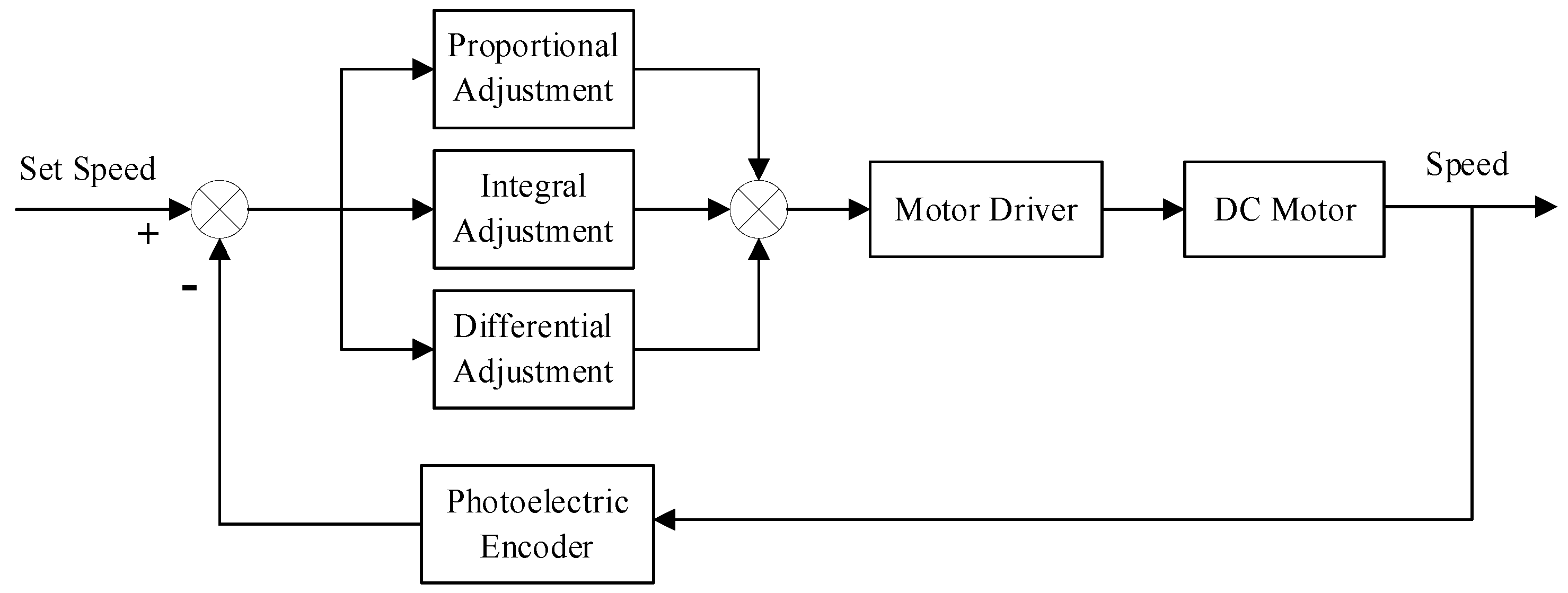
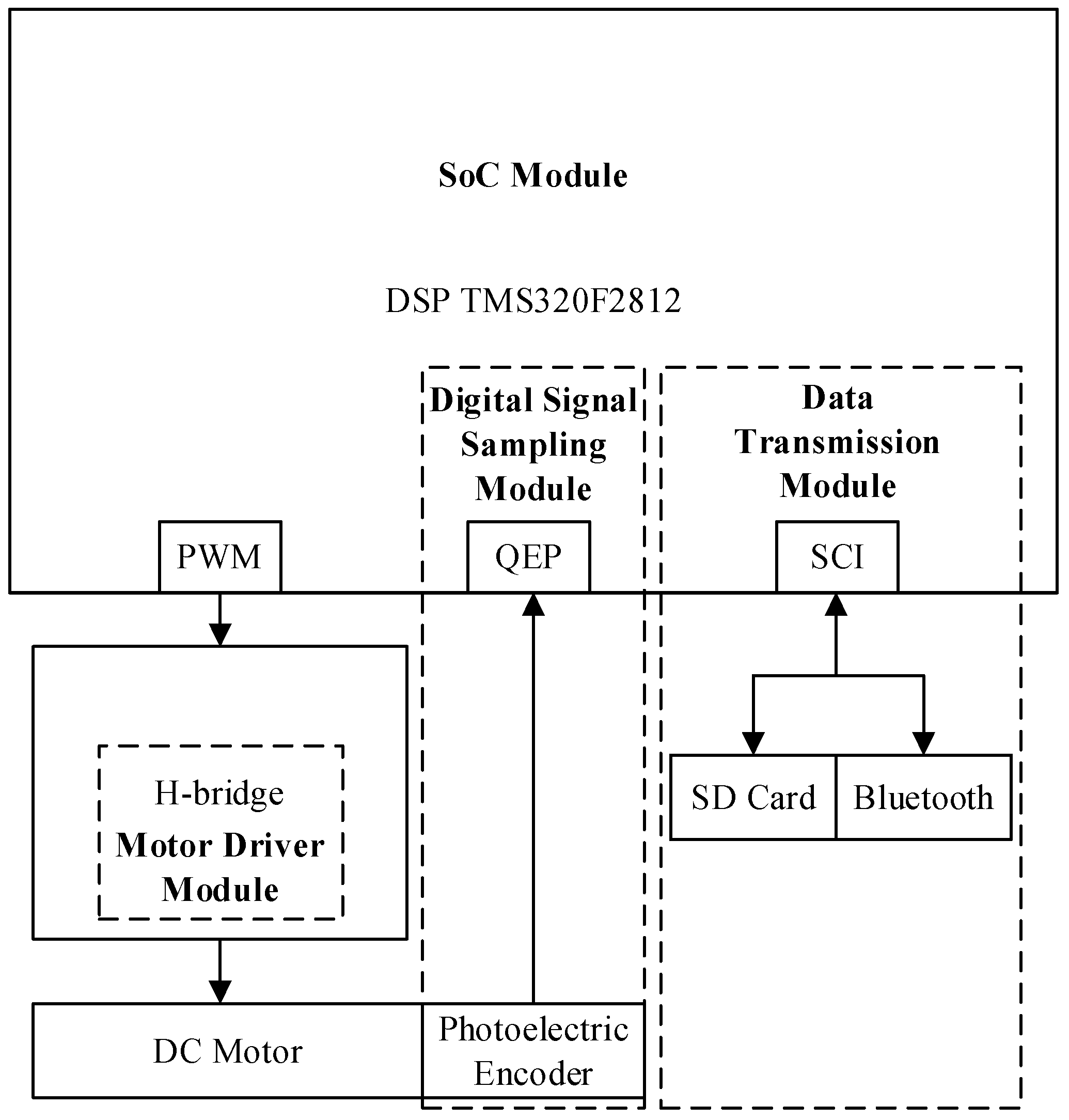

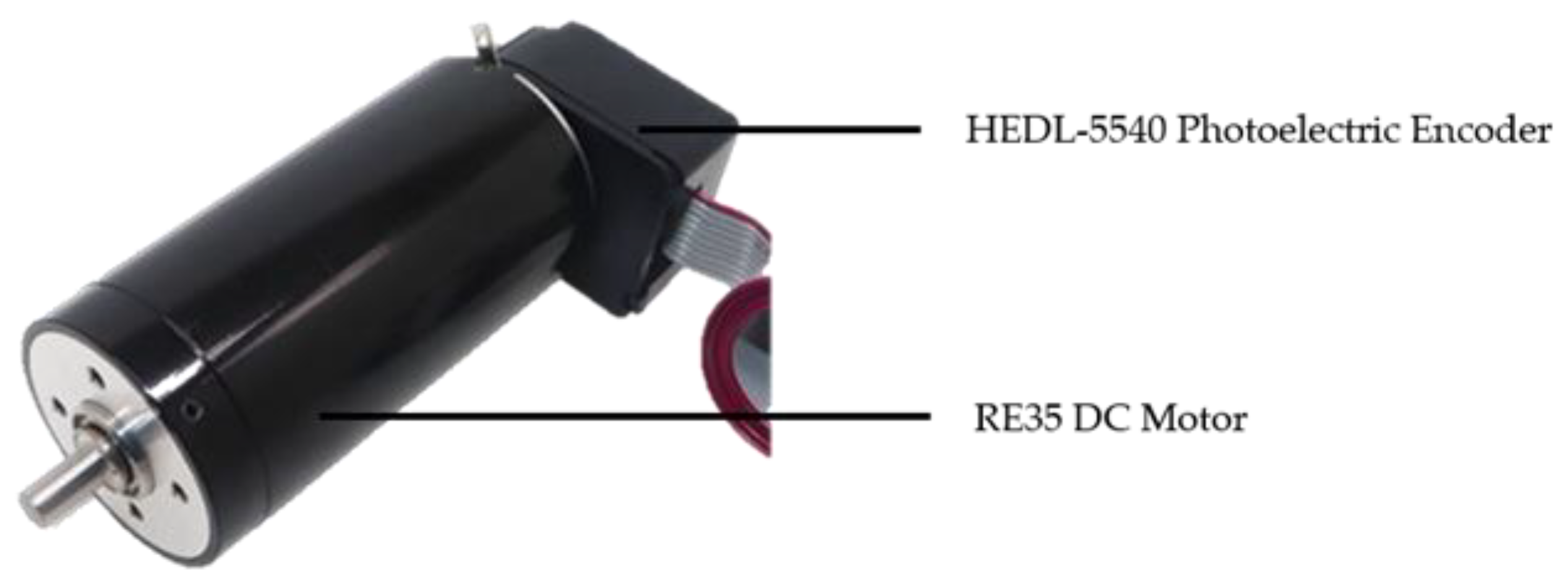
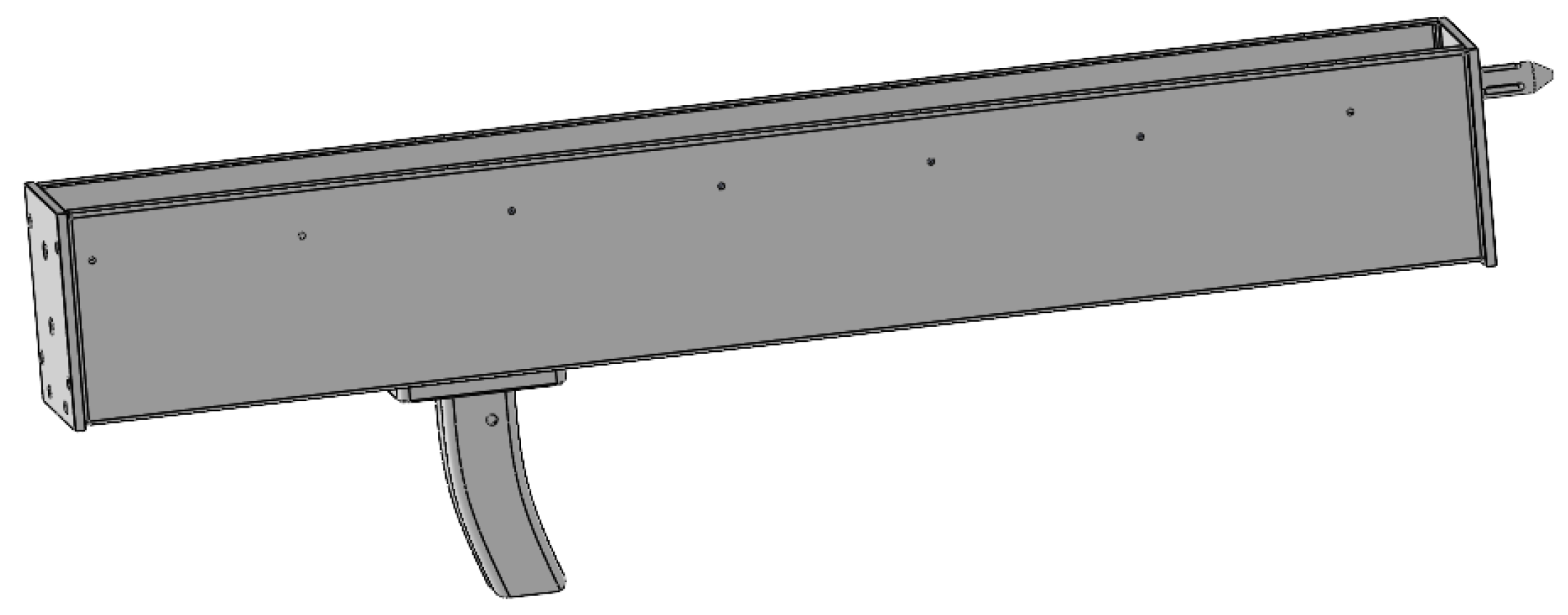
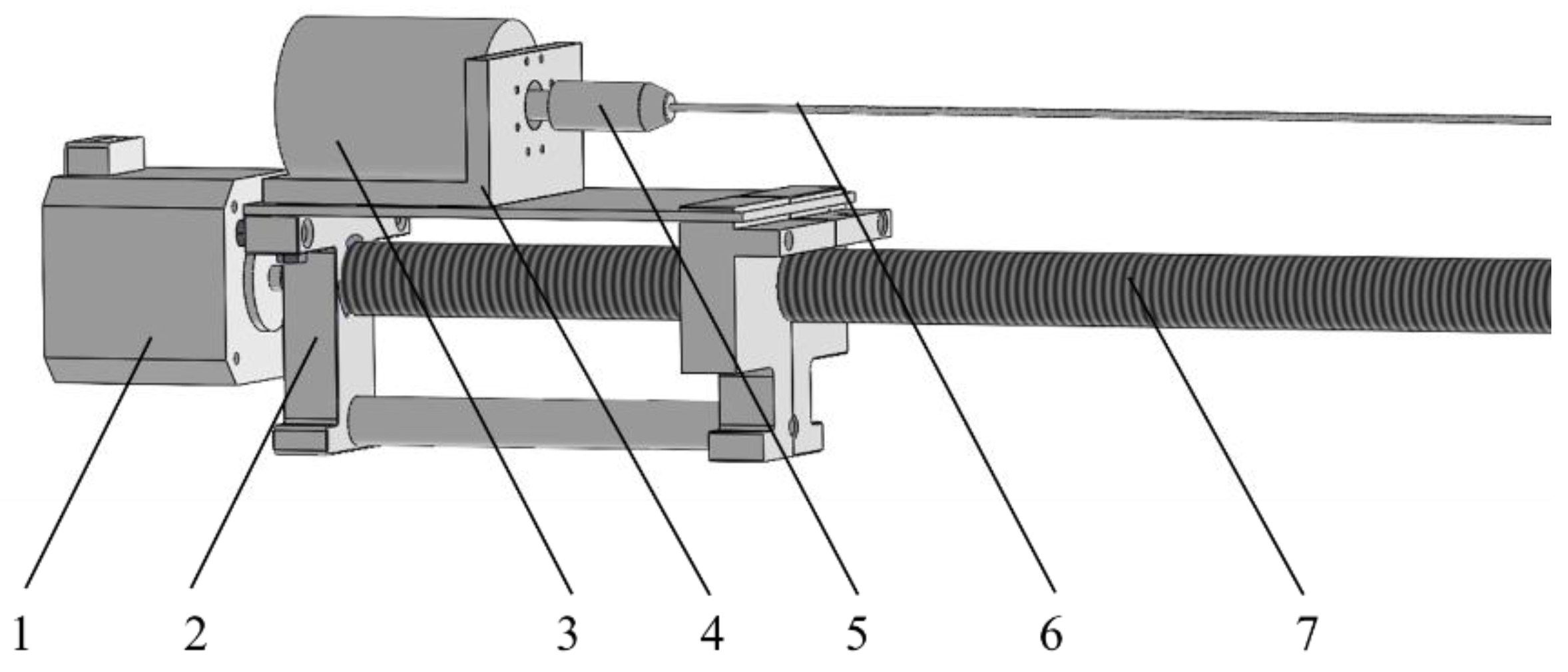
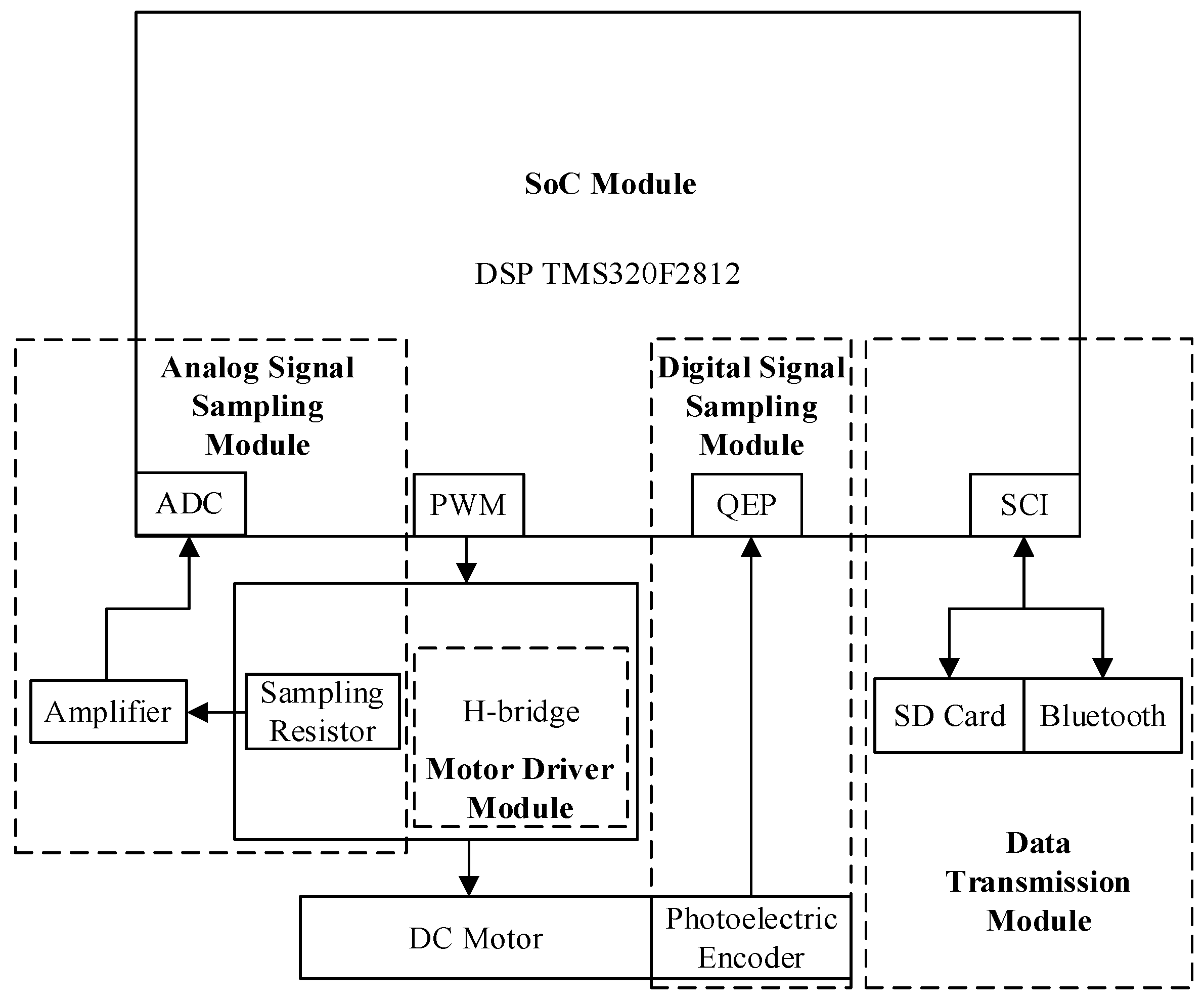
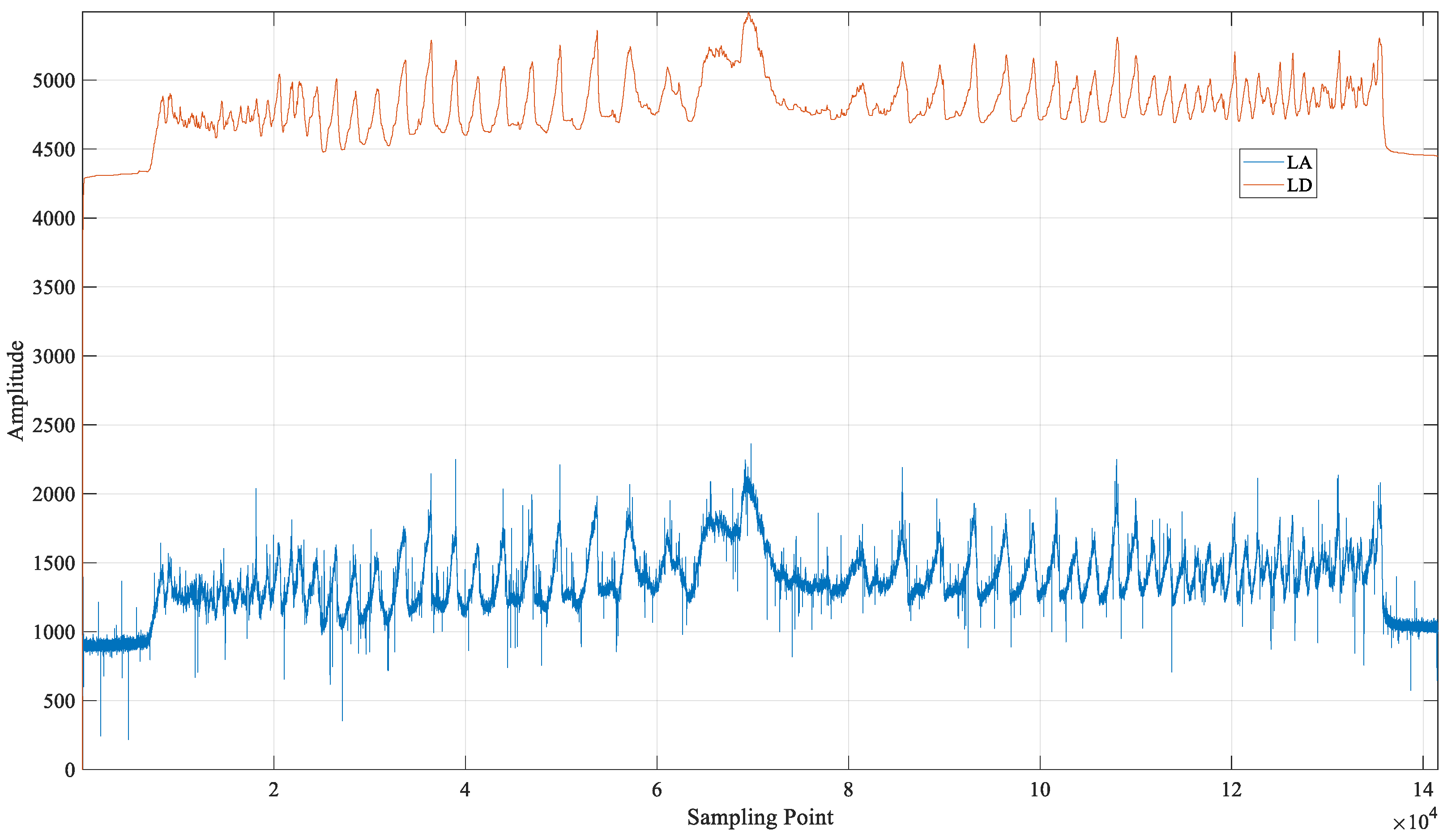
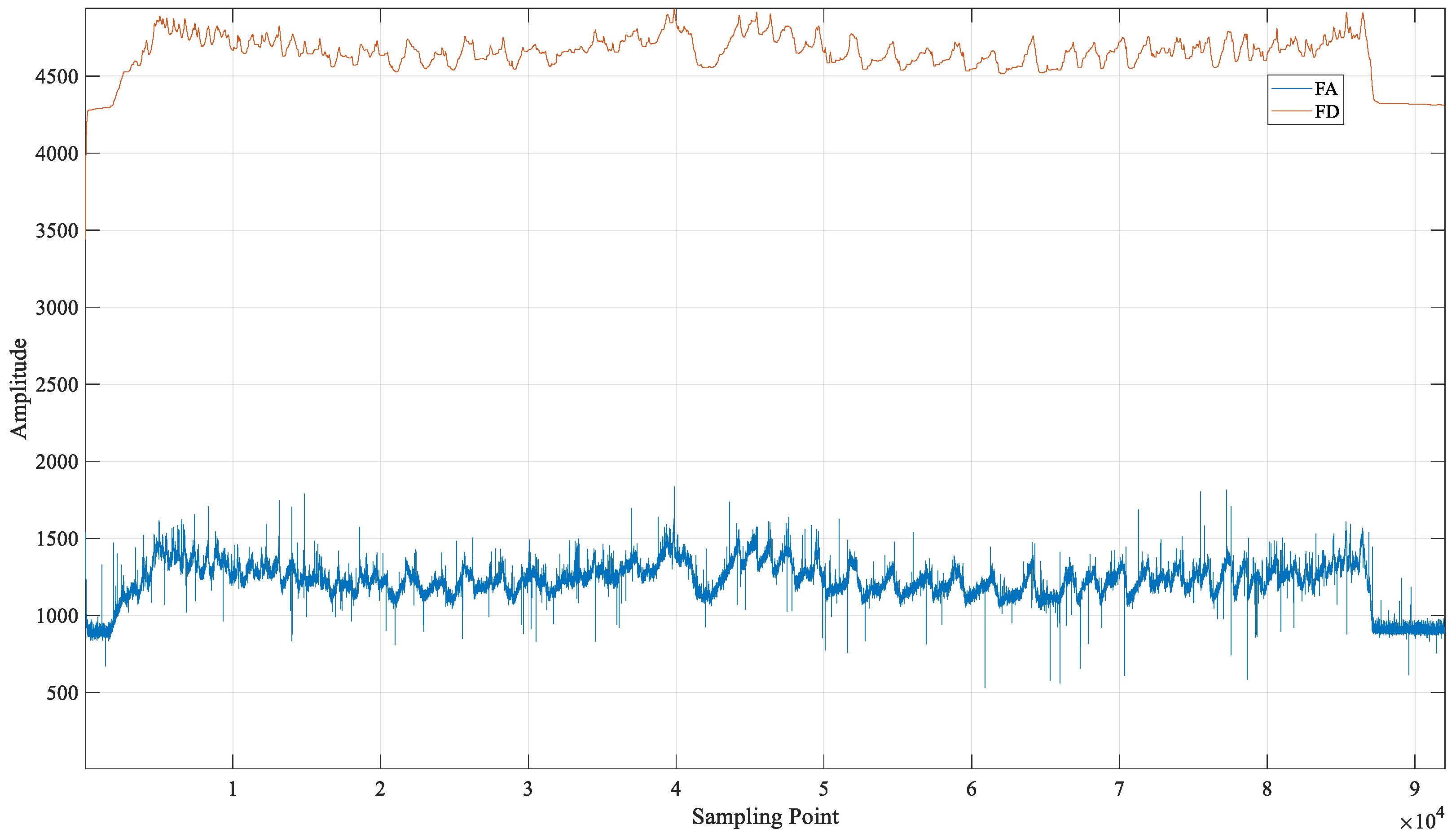
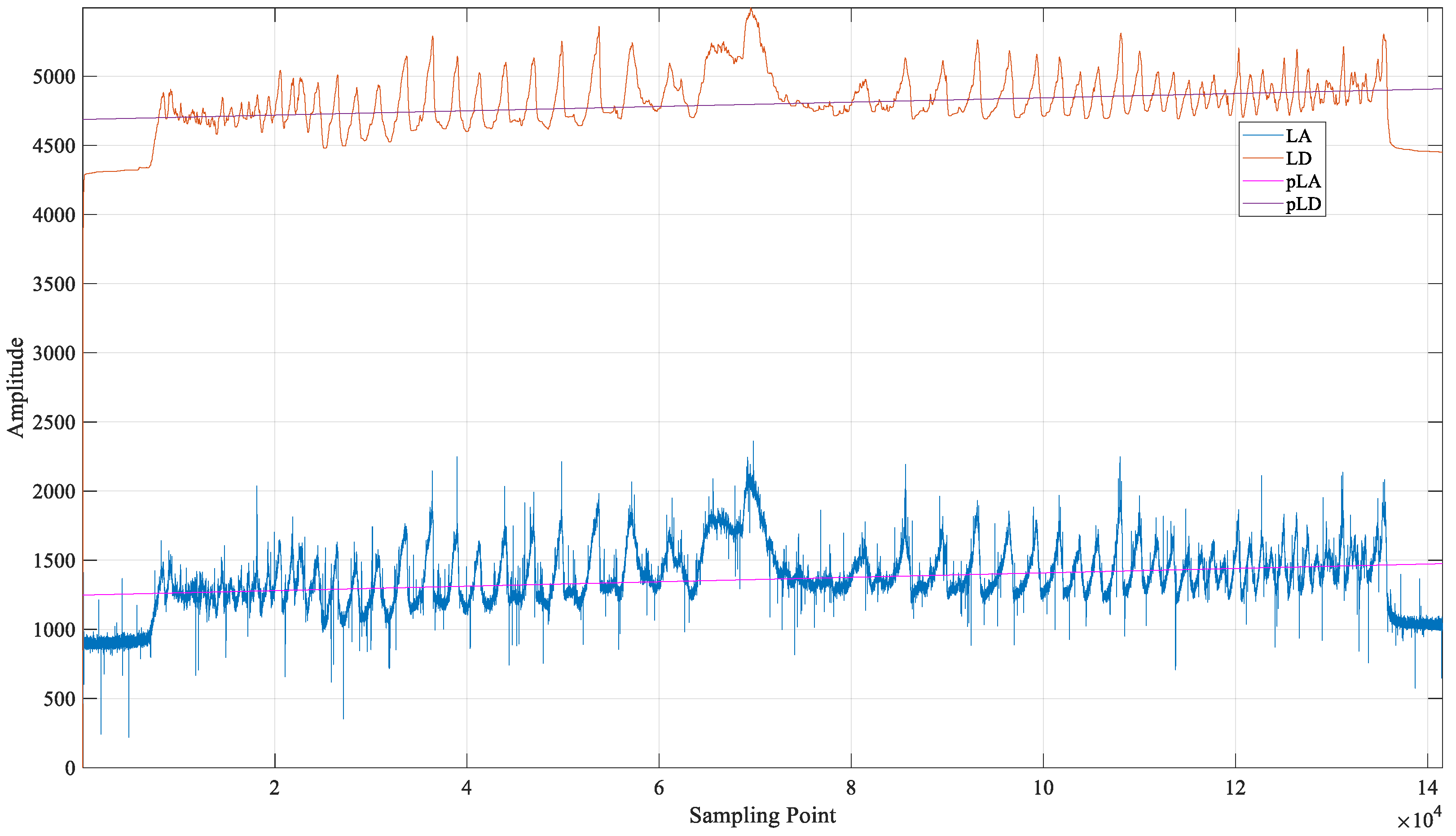
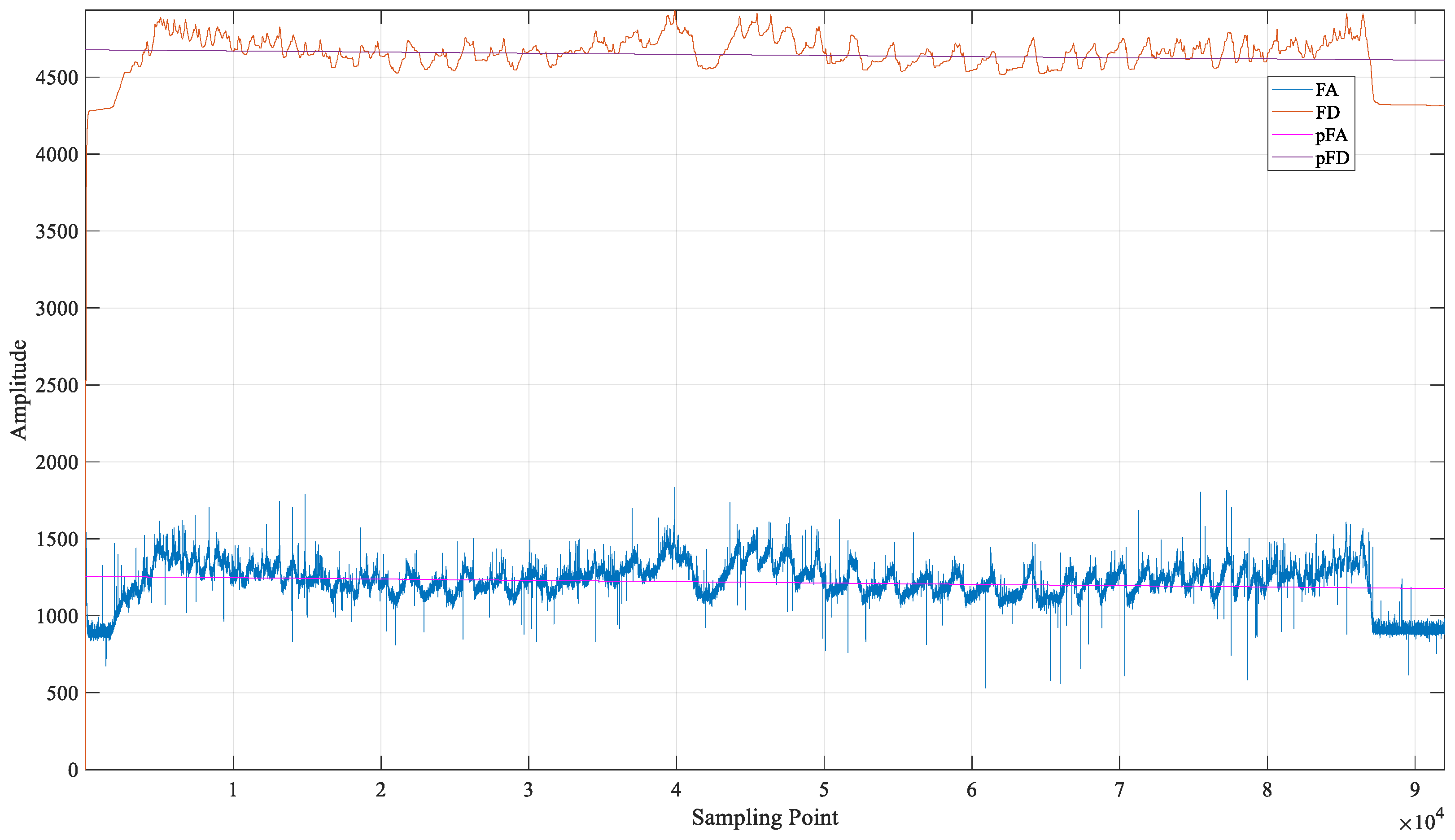
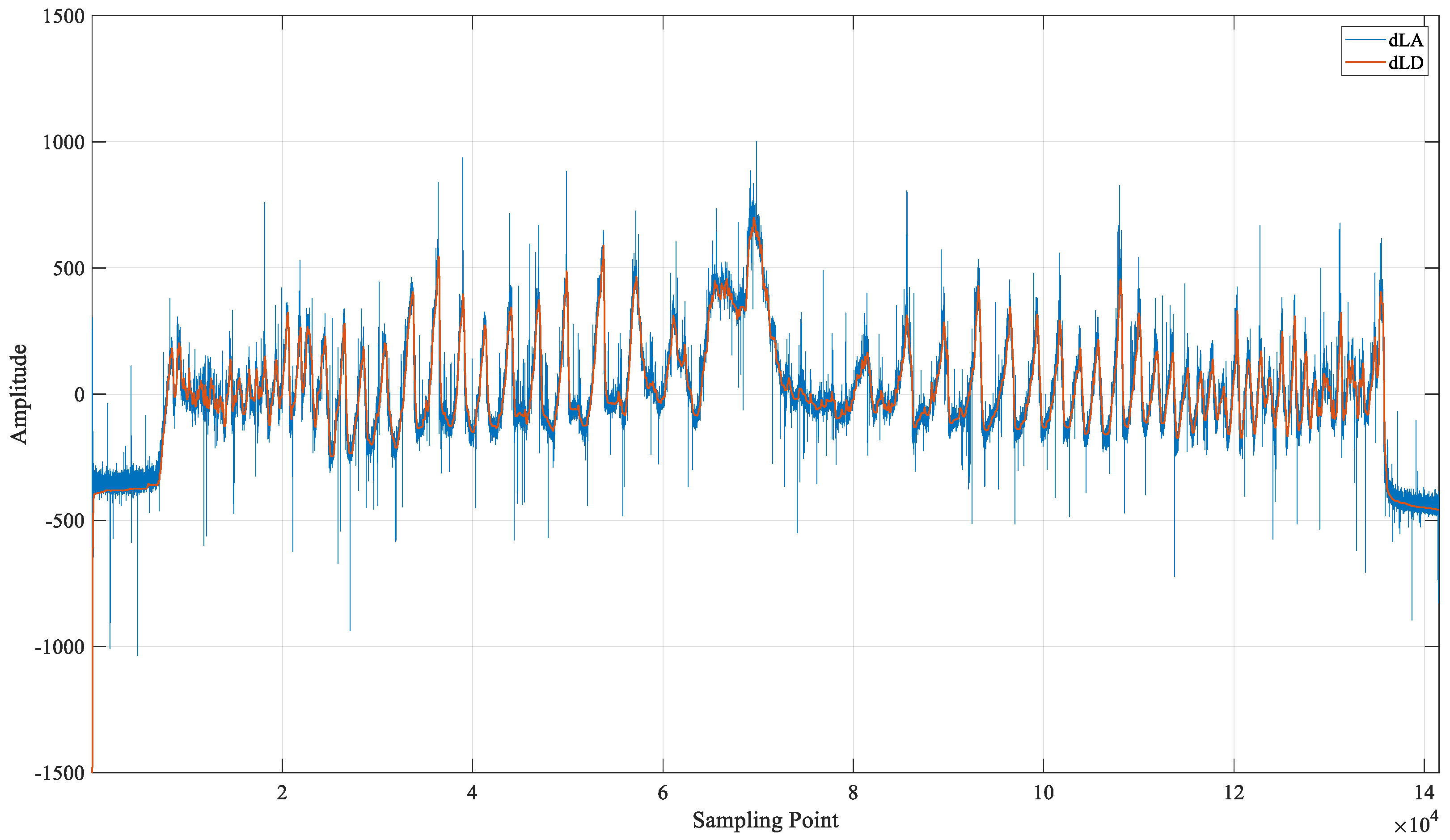
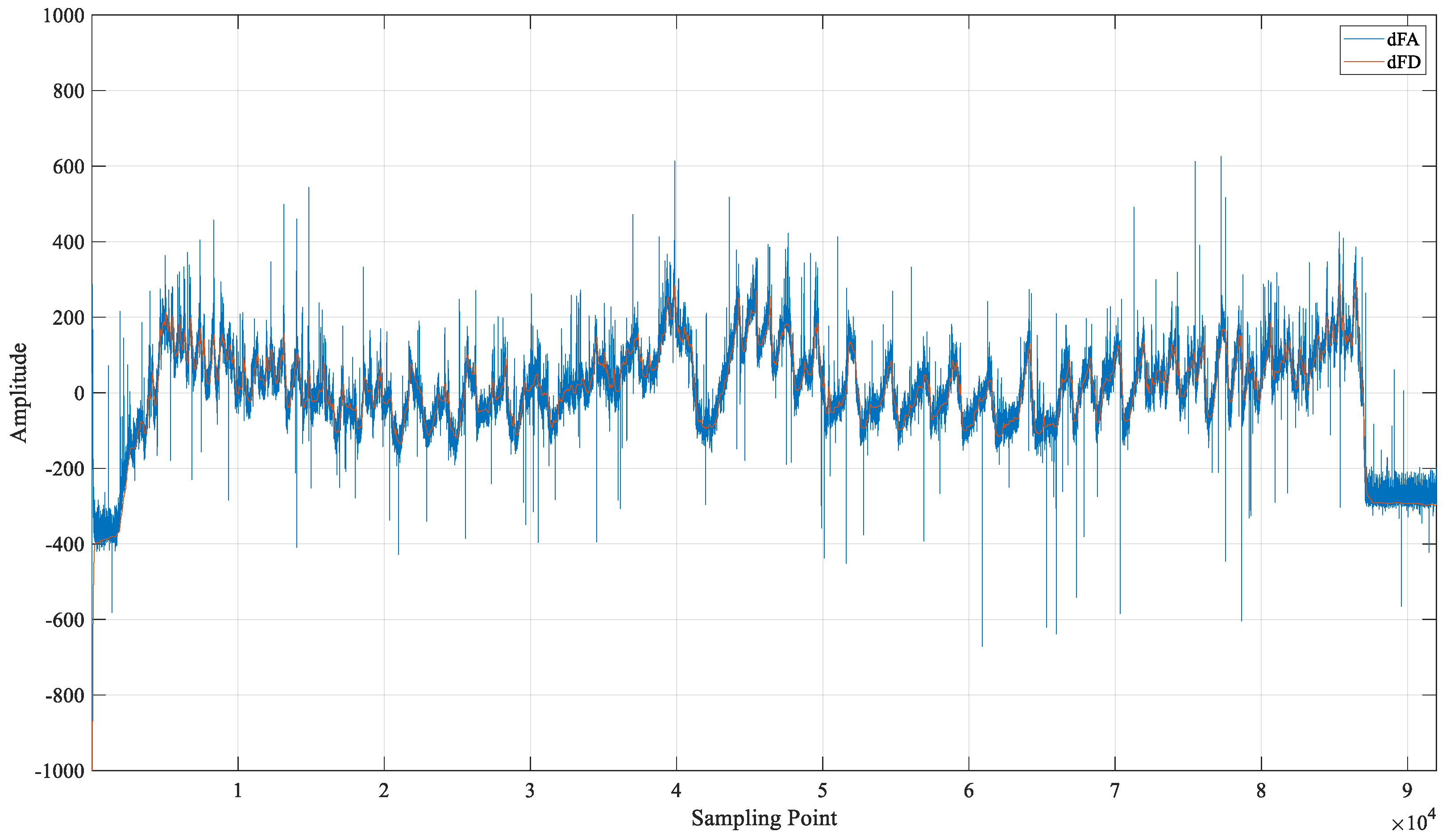

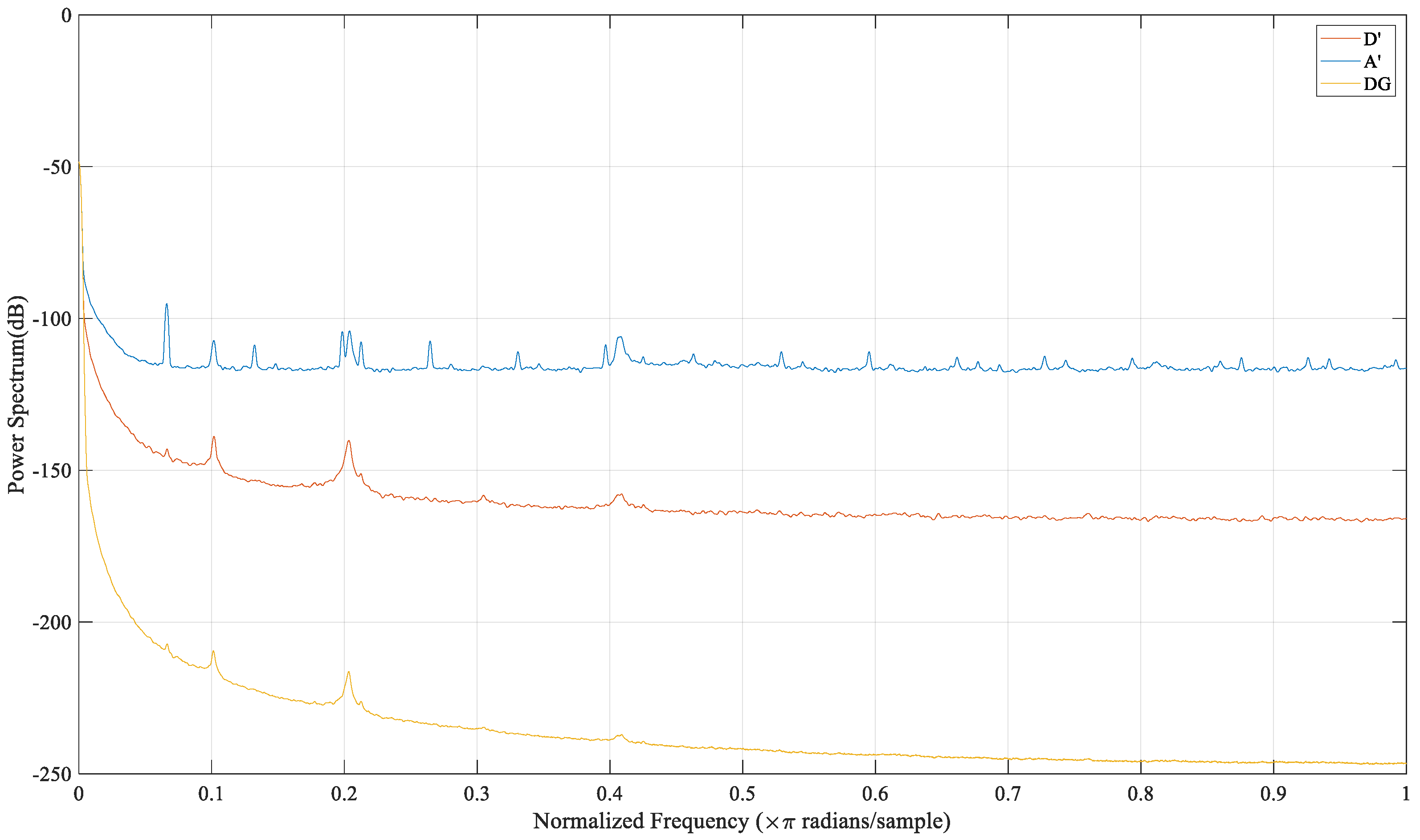


| Characteristic | Mechanical | Analog | Digital |
|---|---|---|---|
| Quantification of results | No | Yes | Yes |
| Circuit complexity | Simple | Complex | Simple |
| Motor control | Open-loop | Closed-loop | Closed-loop |
| Sampling module | Mechanical vibration | ADC | Photoelectric encoder |
| Signal type | Mechanical | Analog | Digital |
| Anti-interference ability | Weak | Weak | Strong |
| Signal quality | Weak | Poor | Good |
| Serial Number (SN) | Tree Specie | Diameter/cm |
|---|---|---|
| 29-1043-52471 | Larch | 21.5 |
| 29-1043-52472 | Larch | 21.3 |
| 29-1257-48683 | Larch | 17.5 |
| 29-1903-44540 | Larch | 14.5 |
| 30-1013-34894 | Fir | 14.3 |
| 30-1512-18696 | Fir | 15.3 |
| 30-1849-16448 | Fir | 16.8 |
| 30-1911-50929 | Fir | 23.3 |
| Serial Number (SN) | Correlation Coefficient | Average | |
|---|---|---|---|
| 29-1043-52471 | 0.9576 | 0.9413 | 0.9365 |
| 29-1043-52472 | 0.9484 | ||
| 29-1257-48683 | 0.9287 | ||
| 29-1903-44540 | 0.9305 | ||
| 30-1013-34894 | 0.9028 | 0.9317 | |
| 30-1512-18696 | 0.9376 | ||
| 30-1849-16448 | 0.9187 | ||
| 30-1911-50929 | 0.9678 | ||
| Serial Number (SN) | SNR (DM) | Average SNR (DM) | SNR (AM) | Average SNR (AM) | SNR Improvement | Average SNR Improvement | |||
|---|---|---|---|---|---|---|---|---|---|
| 29-1043-52471 | 39.2524 | 39.3461 | 39.0145 | 18.3452 | 18.6280 | 19.7555 | 20.9072 | 20.7163 | 19.2590 |
| 29-1043-52472 | 39.2172 | 18.6373 | 20.5799 | ||||||
| 29-1257-48683 | 40.3822 | 18.7451 | 21.6371 | ||||||
| 29-1903-44540 | 38.5327 | 18.7918 | 19.7409 | ||||||
| 30-1013-34894 | 40.4539 | 38.6829 | 21.9157 | 20.8812 | 18.5382 | 17.8017 | |||
| 30-1512-18696 | 38.6922 | 20.3393 | 18.3529 | ||||||
| 30-1849-16448 | 37.7802 | 21.1697 | 16.6105 | ||||||
| 30-1911-50929 | 37.8054 | 20.1002 | 17.7052 | ||||||
| Serial Number (SN) | Average | ||
|---|---|---|---|
| 29-1043-52471 | 0.81% | 0.86% | 1.27% |
| 29-1043-52472 | 0.88% | ||
| 29-1257-48683 | 0.69% | ||
| 29-1903-44540 | 1.06% | ||
| 30-1013-34894 | 1.40% | 1.69% | |
| 30-1512-18696 | 1.46% | ||
| 30-1849-16448 | 2.18% | ||
| 30-1911-50929 | 1.70% | ||
Publisher’s Note: MDPI stays neutral with regard to jurisdictional claims in published maps and institutional affiliations. |
© 2022 by the authors. Licensee MDPI, Basel, Switzerland. This article is an open access article distributed under the terms and conditions of the Creative Commons Attribution (CC BY) license (https://creativecommons.org/licenses/by/4.0/).
Share and Cite
Hu, X.; Zheng, Y.; Xing, D.; Sun, Q. Research on Tree Ring Micro-Destructive Detection Technology Based on Digital Micro-Drilling Resistance Method. Forests 2022, 13, 1139. https://doi.org/10.3390/f13071139
Hu X, Zheng Y, Xing D, Sun Q. Research on Tree Ring Micro-Destructive Detection Technology Based on Digital Micro-Drilling Resistance Method. Forests. 2022; 13(7):1139. https://doi.org/10.3390/f13071139
Chicago/Turabian StyleHu, Xueyang, Yili Zheng, Da Xing, and Qingfeng Sun. 2022. "Research on Tree Ring Micro-Destructive Detection Technology Based on Digital Micro-Drilling Resistance Method" Forests 13, no. 7: 1139. https://doi.org/10.3390/f13071139
APA StyleHu, X., Zheng, Y., Xing, D., & Sun, Q. (2022). Research on Tree Ring Micro-Destructive Detection Technology Based on Digital Micro-Drilling Resistance Method. Forests, 13(7), 1139. https://doi.org/10.3390/f13071139







